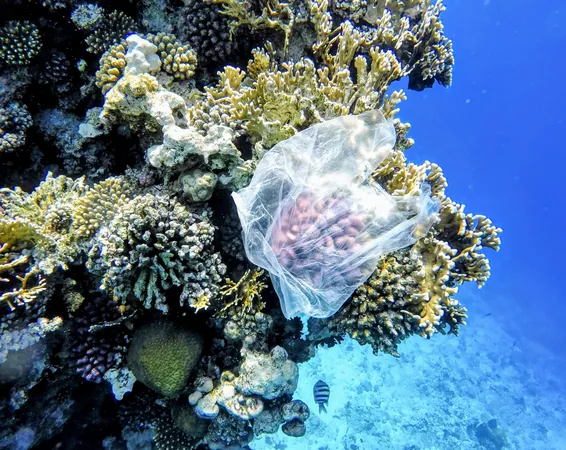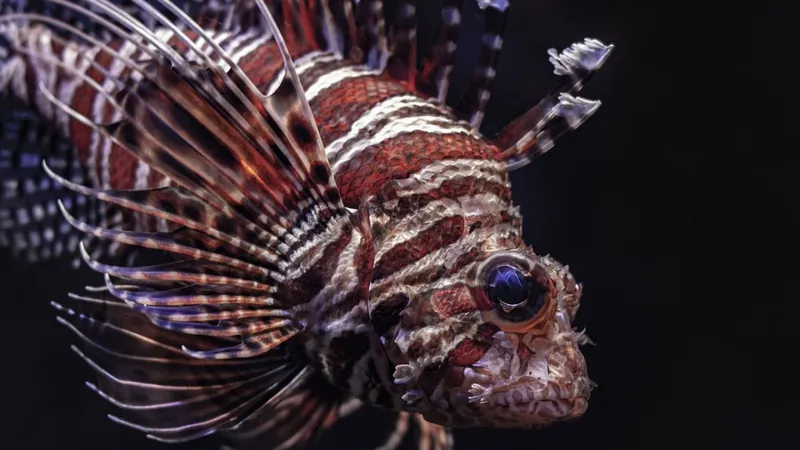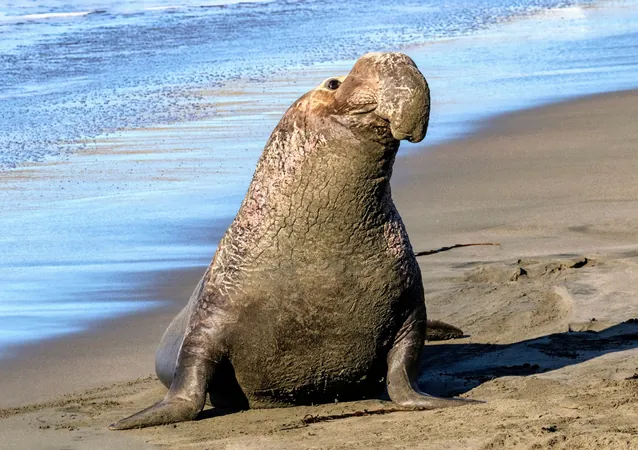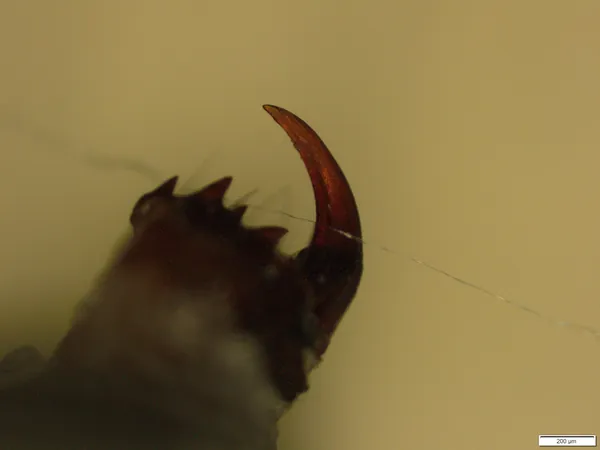
Urgent Discovery: Microplastics Found in Coral Anatomy, Threatening Marine Biodiversity
2024-09-21
In a startling revelation, researchers from Japan and Thailand have found microplastics invading all three parts of coral anatomy: the exterior mucus, tissue, and skeleton. This alarming discovery could provide vital insights into the so-called “missing plastic problem,” as a staggering 70% of plastic waste that enters the oceans mysteriously disappears without a trace.
The researchers suggest that corals may be acting as unsuspecting “plastic sinks,” absorbing microplastics from the ocean and thereby contributing to the perplexing absence of much plastic in marine environments.
The Growing Crisis of Plastic Pollution
The convenience of plastics comes at an extraordinary cost to the environment. Each year, an estimated 4.8 to 12.7 million tons of plastic make their way into marine ecosystems, wreaking havoc on biodiversity.
Lead author of the study, Professor Suppakarn Jandang from Kyushu University’s Research Institute for Applied Mechanics (RIAM) in Japan, emphasized the severity of the issue in Southeast Asia, where nearly 10 million tons of plastic waste are dumped annually—representing one-third of the world’s total.
Innovative Approach to Combatting Plastic Pollution
In 2022, RIAM partnered with Chulalongkorn University in Thailand to establish the Center for Ocean Plastic Studies, led by Professor Atsuhiko Isobe. Their research focused on coral reefs off Si Chang Island, known for its rich biodiversity and anthropological significance.
The team developed a straightforward method to extract and identify microplastics from corals, conducting a thorough sampling with 27 coral specimens that revealed a total of 174 microplastic particles. The findings were shocking: 38% of the plastic was found in the surface mucus, 25% in the tissue, and a significant 37% in the skeleton of the corals.
Types of Microplastics Detected
Among the identified microplastics, materials like nylon, polyacetylene, and PET predominated. Professor Jandang warned that these microplastics, particularly those in coral skeletons, could persist for hundreds of years—much like the way mosquitoes are preserved in amber.
A Dire Threat to Marine Life
The infiltration of microplastics into coral structures poses a grave threat to marine ecosystems. As fundamental habitats in tropical waters, coral reefs are vital for numerous marine species. When microplastics contaminate these corals, the consequences can ripple through the food chain, affecting fish that rely on coral as a shelter and food source. The resultant bioaccumulation can have detrimental effects not only on marine health but also threaten human populations that depend on seafood.
Call for Global Action
In light of these findings, the research team advocates for a strengthened global response to tackle the issue of microplastics. There is an urgent need for enhanced waste management systems and reduction in plastic production. International collaboration on regulatory measures and sustainable practices is essential to curtail this environmental crisis.
Moreover, advancements in biodegradable materials and higher recycling rates could significantly reduce further damage. Public awareness and educational campaigns are crucial for rallying support for policies aimed at ocean preservation.
The Future of Our Oceans
Despite the eye-opening nature of these findings, the researchers acknowledge that more comprehensive studies involving diverse coral species are necessary to fully grasp the ramifications. Professor Isobe pointed out that the effects of microplastics on coral health and the broader reef community remain largely unknown.
The saga of plastic’s invasion into our oceans is unfolding, and the role played by corals in this ongoing environmental drama is just beginning to be understood. The critical nature of this issue highlights the need for immediate action to protect our precious marine ecosystems—our oceans' future depends on it.
For further insights and ongoing coverage of this crucial issue, the study can be found published in the journal *Science of The Total Environment*.



 Brasil (PT)
Brasil (PT)
 Canada (EN)
Canada (EN)
 Chile (ES)
Chile (ES)
 España (ES)
España (ES)
 France (FR)
France (FR)
 Hong Kong (EN)
Hong Kong (EN)
 Italia (IT)
Italia (IT)
 日本 (JA)
日本 (JA)
 Magyarország (HU)
Magyarország (HU)
 Norge (NO)
Norge (NO)
 Polska (PL)
Polska (PL)
 Schweiz (DE)
Schweiz (DE)
 Singapore (EN)
Singapore (EN)
 Sverige (SV)
Sverige (SV)
 Suomi (FI)
Suomi (FI)
 Türkiye (TR)
Türkiye (TR)